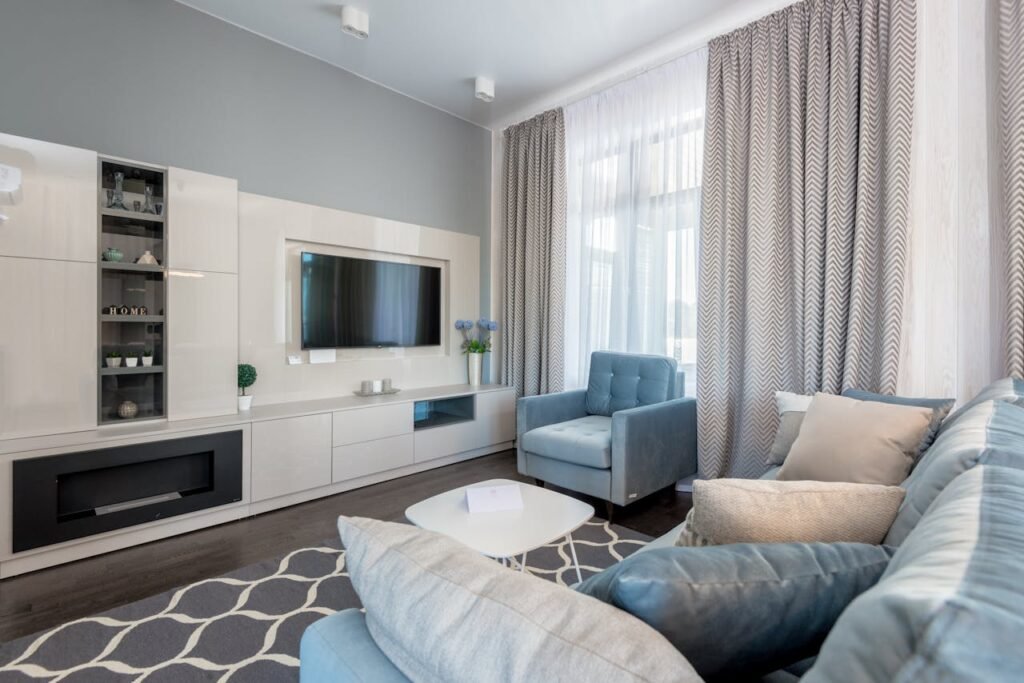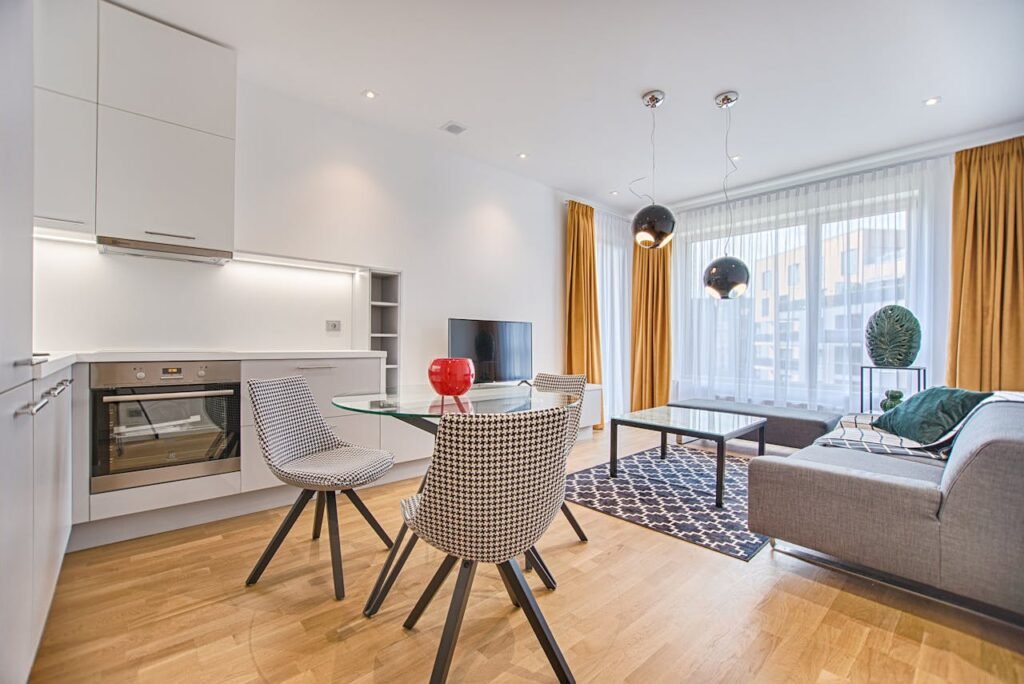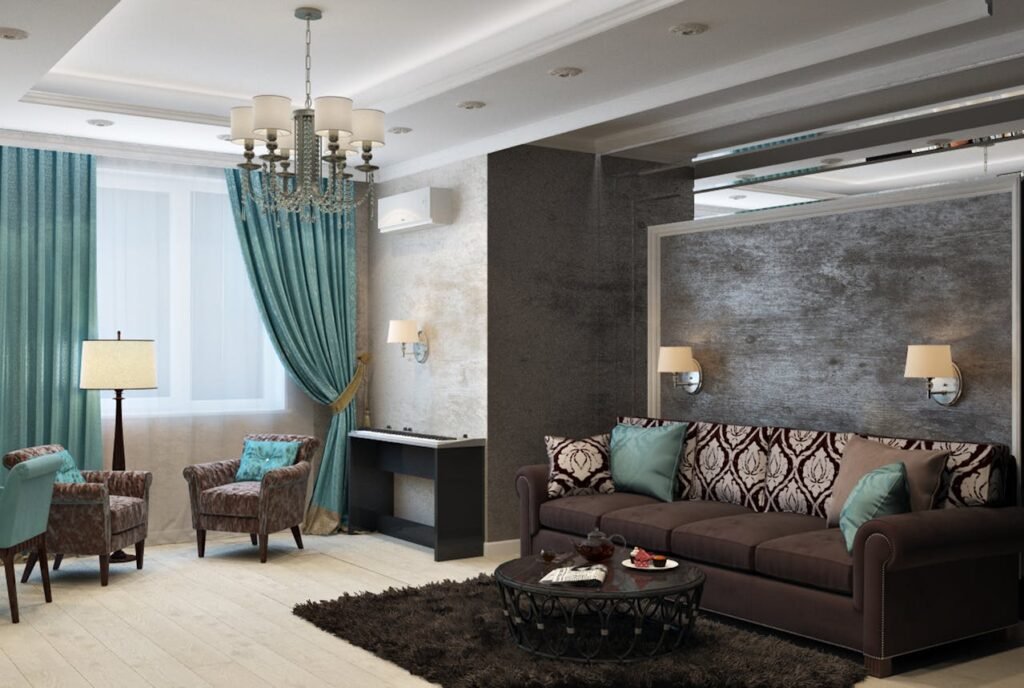How to Choose Curtains for Your Living Room
Curtains can transform your living room from ordinary to extraordinary, but choosing the right ones requires careful consideration of multiple factors. The perfect curtains don’t just hang at your windows—they complement your decor, control light effectively, and enhance your room’s overall aesthetic.
Unlike bedroom curtains that prioritize privacy and light blocking, living room curtains serve a different purpose. They balance natural light with style, creating an inviting atmosphere for daily activities and entertaining guests. The good news? With the right approach, you can select curtains that elevate your space while meeting your practical needs.
This guide will walk you through everything you need to know about choosing curtains for your living room, from understanding different fabric types to measuring properly and coordinating with your existing decor.
Understanding Curtains vs. Other Window Treatments
Before diving into selection criteria, it’s important to understand what sets curtains apart from other window treatments. Curtains are typically lighter and more casual than drapes, often unlined to allow filtered light through. This makes them ideal for living rooms where complete light blocking isn’t necessary.
Unlike heavy drapes or structured blinds, curtains offer a softer, more relaxed appearance that works well in various design styles. They’re also generally more affordable and easier to change seasonally than other window treatment options.
Key Factors to Consider When Choosing Living Room Curtains
Light Control and Privacy Needs
The amount of natural light in your living room significantly impacts your curtain choice. Rooms with abundant sunlight may benefit from curtains with blackout lining, while spaces with moderate light exposure work well with basic cotton lining or unlined panels.
Consider your privacy requirements too. Ground-floor living rooms facing busy streets need different coverage than upper-floor rooms with limited visibility from outside. Sheer curtains provide minimal privacy but maximum light, while heavier fabrics offer more seclusion.
Room Size and Ceiling Height
Your living room’s dimensions directly influence curtain selection. Large patterns and bold colors work beautifully in spacious rooms but can overwhelm smaller spaces.
Conversely, delicate patterns and light colors help compact rooms feel more open and airy.
Ceiling height also matters. Hanging curtains closer to the ceiling rather than just above the window frame creates the illusion of taller windows and higher ceilings, making your room appear more spacious.
Existing Color Palette and Decor Style
Your curtains should harmonize with your room’s existing color scheme and design aesthetic. Light-colored curtains brighten spaces and create an open feel, while darker colors add coziness but may make rooms feel smaller.
Consider whether you want your curtains to blend seamlessly with your walls or serve as a focal point. Neutral colors offer versatility and longevity, while bold hues can make a striking statement when chosen thoughtfully.
Choosing the Right Fabric and Texture
Natural vs. Synthetic Materials
Cotton and linen curtains work exceptionally well in sunny living rooms due to their lightweight, breathable nature. These natural fibers allow air circulation while providing gentle light filtering. For durability and easy maintenance, synthetic alternatives that mimic natural textures offer similar aesthetics with added practicality.
Heavier fabrics like velvet or thick cotton work better in cooler climates where insulation is beneficial. In warmer areas, stick with lighter fabrics that won’t trap heat or block air circulation.
Texture Considerations
Texture adds visual interest and dimension to your living room. Smooth fabrics like silk or satin create elegant, formal looks, while textured materials like burlap or woven cotton offer casual, relaxed vibes.
Consider how curtain texture will interact with other textiles in your room. If you have smooth leather furniture, textured curtains can add visual balance. Conversely, if your space already features multiple textures, simpler curtain fabrics might work better.
Pattern and Color Selection Strategies
Scale and Proportion
Pattern size should match your room’s scale and existing furnishings. Large, bold patterns work best in spacious rooms with substantial furniture pieces. Smaller, more delicate patterns suit intimate spaces or rooms with intricate decor elements.
When mixing patterns, ensure they share common colors or vary significantly in scale to avoid visual competition. If your room already features patterned wallpaper or upholstery, consider solid-colored curtains to maintain balance.
Color Psychology in Living Spaces
Colors significantly impact room ambiance. Warm colors like reds, oranges, and yellows create cozy, inviting atmospheres perfect for family gatherings. Cool colors such as blues, greens, and purples promote relaxation and tranquility.
Neutral colors—whites, grays, beiges, and soft earth tones—offer flexibility and timeless appeal. They work with various decor styles and allow you to change accent colors through accessories without replacing curtains.
Measuring and Sizing Your Curtains
Length Options
Curtain length dramatically affects your room’s appearance. Floor-length curtains create elegant, polished looks and make windows appear larger. For a more relaxed aesthetic, allow curtains to pool slightly on the floor.
Sill-length curtains work well for windows above furniture or in casual settings. However, they can make windows and rooms appear smaller, so use them strategically.
Width Considerations
Proper curtain width ensures both functionality and visual appeal. Curtains should extend beyond the window frame on both sides when closed, typically 4-6 inches per side for standard windows. This creates better light control and makes windows appear wider.
For fullness when panels are open, choose curtains that are 1.5 to 2 times the width of your window. This creates attractive folds and a luxurious appearance.
Installation and Hardware Selection
Rod Placement
Install curtain rods 4-6 inches above the window frame and extend them beyond the window sides. This positioning makes windows appear larger and allows maximum light when curtains are open.
For very tall ceilings, you can mount rods even higher, but maintain proportion to avoid making windows look disproportionately small.
Hardware Style
Choose curtain rods that complement your room’s style and existing hardware finishes. Traditional rooms work well with decorative rods featuring ornate finials, while modern spaces benefit from sleek, minimal hardware.
Consider whether you want hardware to be a focal point or blend subtly into your decor. Bold, decorative rods become design elements themselves, while simple styles keep attention on the curtains.
Layering Techniques for Enhanced Style
Combining Sheer and Solid Panels
Layering sheer curtains behind solid panels offers ultimate flexibility in light control and privacy. During the day, close solid panels and leave sheers for filtered light. In the evening, close both layers for complete privacy.
This technique works particularly well in rooms that serve multiple purposes or have varying light needs throughout the day.
Seasonal Adaptability
Consider changing curtains seasonally for fresh looks without major decor overhauls. Light, airy fabrics work beautifully in spring and summer, while richer, heavier materials suit fall and winter months.
Choose neutral-colored solid panels as your base and switch out patterned or colored layers seasonally for cost-effective variety.
Energy Efficiency and Practical Benefits
Thermal Control
Full-length curtains provide natural insulation against temperature extremes. In hot climates, light-colored curtains reflect heat and keep rooms cooler. In cold weather, heavier curtains help retain warmth and reduce heating costs.
Thermal linings add extra insulation without changing your curtains’ appearance. This option works particularly well for rooms with large windows or challenging temperature control.
Sound Absorption
Heavy curtain fabrics help absorb sound, making your living room quieter and more comfortable. This benefit is especially valuable in urban environments or homes with hard flooring that doesn’t absorb sound naturally.
Testing and Final Selection
Sample Evaluation
Before committing to curtains, obtain large fabric samples and test them in your space. Tape samples to your windows and observe how they look throughout the day under different lighting conditions.
Live with samples for several days to see how colors and patterns work with your existing decor. What looks perfect in morning light might appear different in evening illumination.
Professional vs. DIY Installation
While simple curtain hanging is manageable for most homeowners, complex installations or heavy curtains may require professional help. Consider your skills, available time, and the importance of perfect results when deciding.
Professional installation ensures proper measurements, secure mounting, and polished appearance, especially for expensive or custom curtains.
Conclusion
Choosing the perfect curtains for your living room involves balancing practical needs with aesthetic preferences. Start by assessing your room’s lighting, size, and existing decor, then work through fabric, color, and pattern options systematically.
Remember that curtains are one of the most impactful and changeable elements in room design. Take time to test samples, measure carefully, and consider how your choices will work long-term with your lifestyle and decor evolution.



